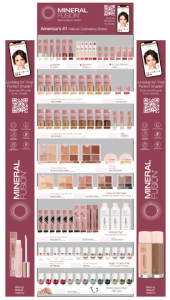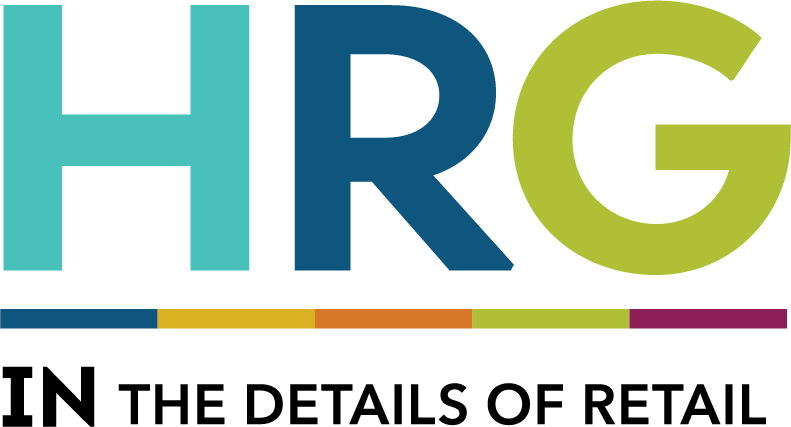By Holly Jablonowski, business administration manager
For a seamless set or reset experience, not only do the products have to fit in the parts & pieces (trays, holders, etc.) used, those parts & pieces need to fit so there are no surprises during at-shelf execution.
Think of all the partners involved in a reset: brands, retailers, merchandising implementation crews, and fixture manufacturers to name a few. Who is creating planograms? Are they using space management software, or some other tool? Do they have all of the necessary data to create an accurate planogram? For example, some brands create planograms, but they may not have the precise measurements for the trays and other display parts, meaning the planogram they provide may be inaccurate. (See the potential financial impact of having a broken or missing part in a fixture display for one product.) Other brands simply use a spreadsheet to create the shelf arrangement. Some fixture companies use other than space management software to validate the fit, but that tool may not take all the appropriate factors into account. Then there is the coordination between all the partners so all runs smoothly from beginning to end — the implementation in store. Without strong project management, there are plenty of opportunities for confusion and errors. If the display section cannot be set as planned, key items may not make it to the shelf, and significant sales and profits could be lost. The highly customized nature of trays alone means that you can’t just “squeeze” a product in. Especially in categories with frequent changes to the assortment, it’s essential to eliminate inaccuracies in the planogram.
Having retail expertise combined with knowledge of space planning software is essential to establishing business rules that ensure everything fits. The planogram files provided by a retailer or a brand are the most reliable source for the dimensions and number of trays, graphics, holders, clips, and space savers used in a new configuration. There should also be validation that everything the brand expects to fit on a wall will indeed fit, a definite must for efficient and effective at-shelf retail execution.
HRG believes in a collaborative approach guided by proven project management practices. We’ve partnered with fixture manufacturers, merchandisers, stores, and brands to streamline the process for all parties involved. Try our Fixture Calculator to discover how much savings you could realize by streamlining your fixture coordination. Reach out if you’d like to discuss your upcoming reset or new set.
Then there is the coordination between all the partners so all runs smoothly from beginning to end — the implementation in store. Without strong project management, there are plenty of opportunities for confusion and errors. If the display section cannot be set as planned, key items may not make it to the shelf, and significant sales and profits could be lost. The highly customized nature of trays alone means that you can’t just “squeeze” a product in. Especially in categories with frequent changes to the assortment, it’s essential to eliminate inaccuracies in the planogram.
Having retail expertise combined with knowledge of space planning software is essential to establishing business rules that ensure everything fits. The planogram files provided by a retailer or a brand are the most reliable source for the dimensions and number of trays, graphics, holders, clips, and space savers used in a new configuration. There should also be validation that everything the brand expects to fit on a wall will indeed fit, a definite must for efficient and effective at-shelf retail execution.
HRG believes in a collaborative approach guided by proven project management practices. We’ve partnered with fixture manufacturers, merchandisers, stores, and brands to streamline the process for all parties involved. Try our Fixture Calculator to discover how much savings you could realize by streamlining your fixture coordination. Reach out if you’d like to discuss your upcoming reset or new set.
 Then there is the coordination between all the partners so all runs smoothly from beginning to end — the implementation in store. Without strong project management, there are plenty of opportunities for confusion and errors. If the display section cannot be set as planned, key items may not make it to the shelf, and significant sales and profits could be lost. The highly customized nature of trays alone means that you can’t just “squeeze” a product in. Especially in categories with frequent changes to the assortment, it’s essential to eliminate inaccuracies in the planogram.
Having retail expertise combined with knowledge of space planning software is essential to establishing business rules that ensure everything fits. The planogram files provided by a retailer or a brand are the most reliable source for the dimensions and number of trays, graphics, holders, clips, and space savers used in a new configuration. There should also be validation that everything the brand expects to fit on a wall will indeed fit, a definite must for efficient and effective at-shelf retail execution.
HRG believes in a collaborative approach guided by proven project management practices. We’ve partnered with fixture manufacturers, merchandisers, stores, and brands to streamline the process for all parties involved. Try our Fixture Calculator to discover how much savings you could realize by streamlining your fixture coordination. Reach out if you’d like to discuss your upcoming reset or new set.
Then there is the coordination between all the partners so all runs smoothly from beginning to end — the implementation in store. Without strong project management, there are plenty of opportunities for confusion and errors. If the display section cannot be set as planned, key items may not make it to the shelf, and significant sales and profits could be lost. The highly customized nature of trays alone means that you can’t just “squeeze” a product in. Especially in categories with frequent changes to the assortment, it’s essential to eliminate inaccuracies in the planogram.
Having retail expertise combined with knowledge of space planning software is essential to establishing business rules that ensure everything fits. The planogram files provided by a retailer or a brand are the most reliable source for the dimensions and number of trays, graphics, holders, clips, and space savers used in a new configuration. There should also be validation that everything the brand expects to fit on a wall will indeed fit, a definite must for efficient and effective at-shelf retail execution.
HRG believes in a collaborative approach guided by proven project management practices. We’ve partnered with fixture manufacturers, merchandisers, stores, and brands to streamline the process for all parties involved. Try our Fixture Calculator to discover how much savings you could realize by streamlining your fixture coordination. Reach out if you’d like to discuss your upcoming reset or new set. 